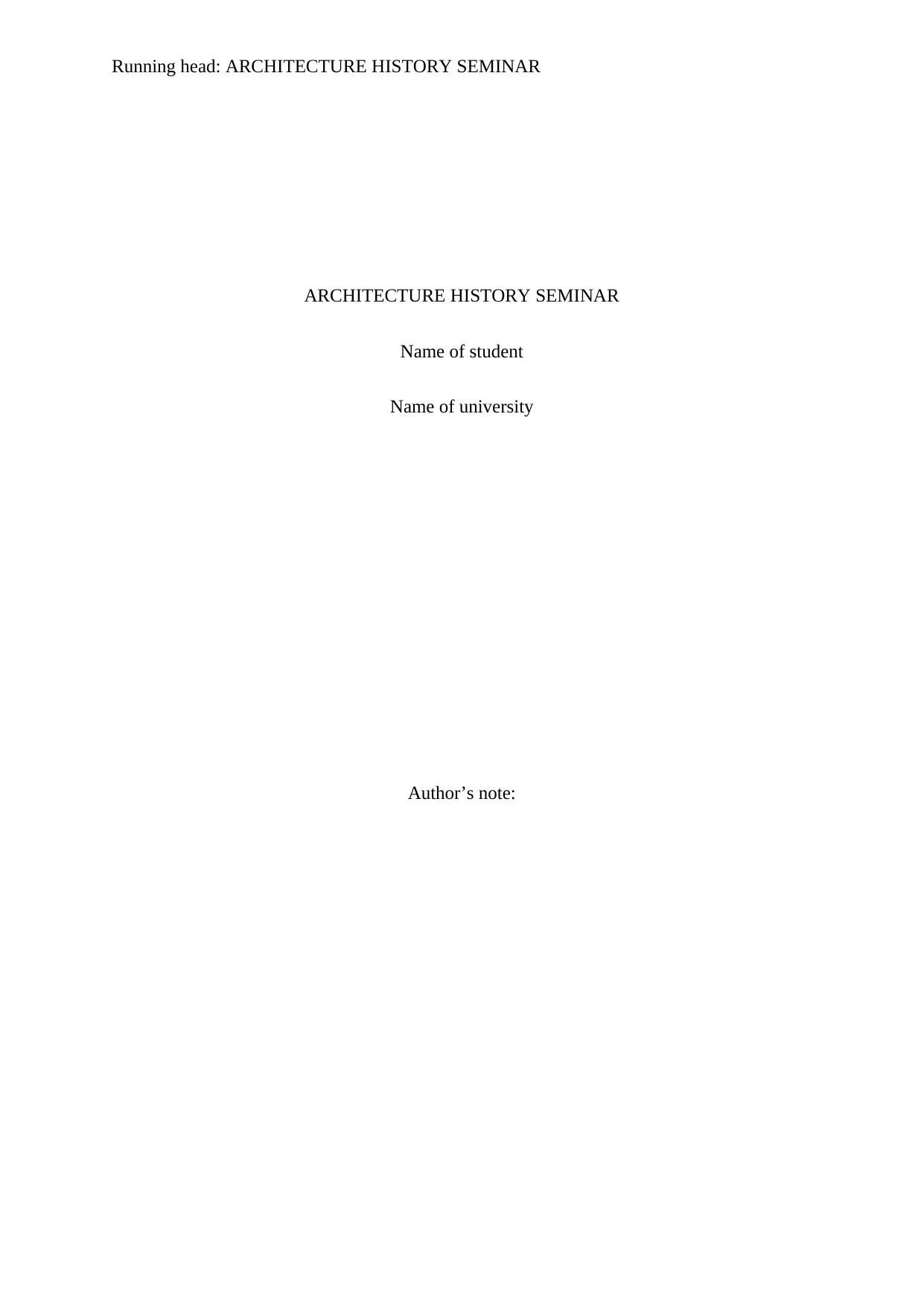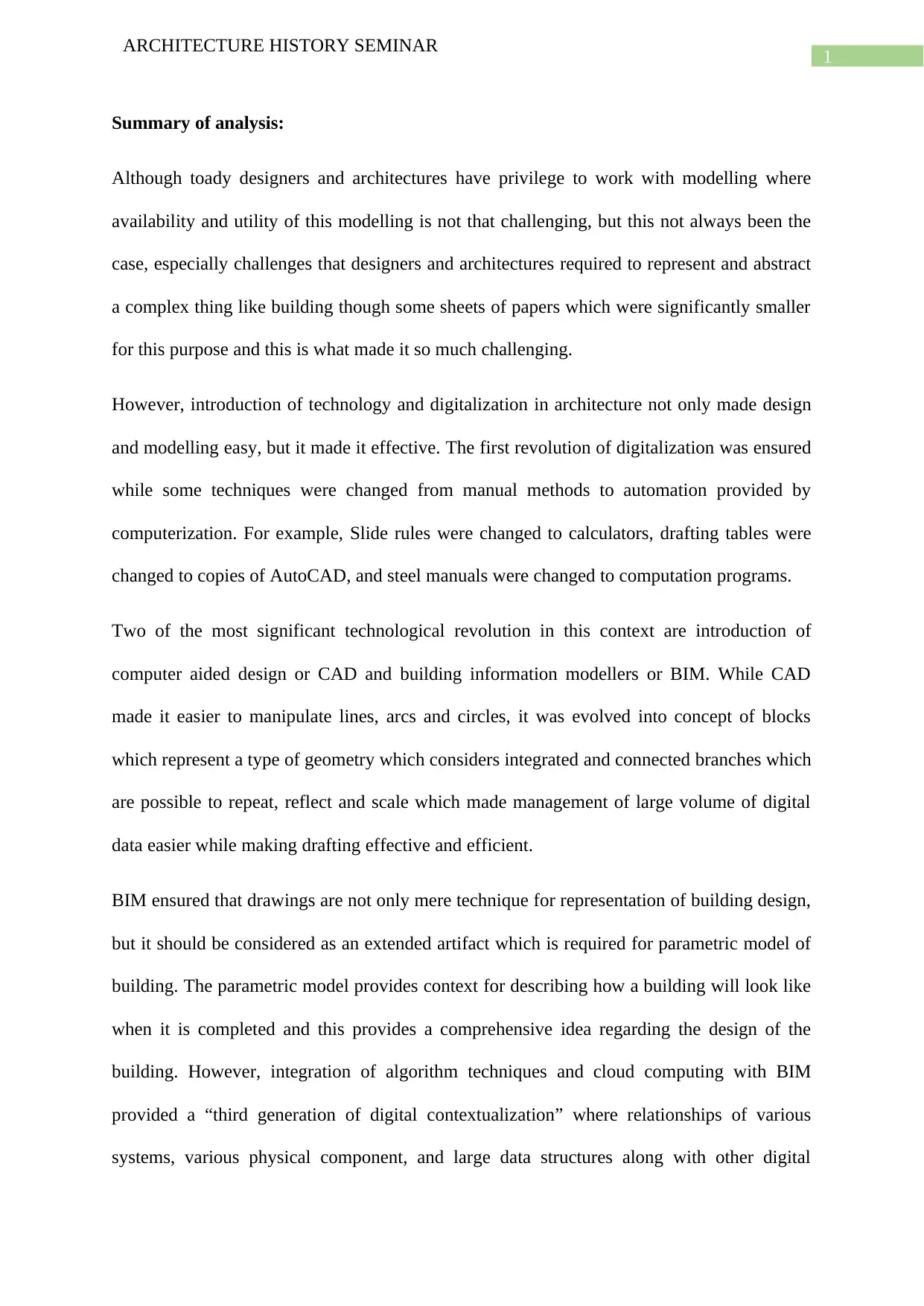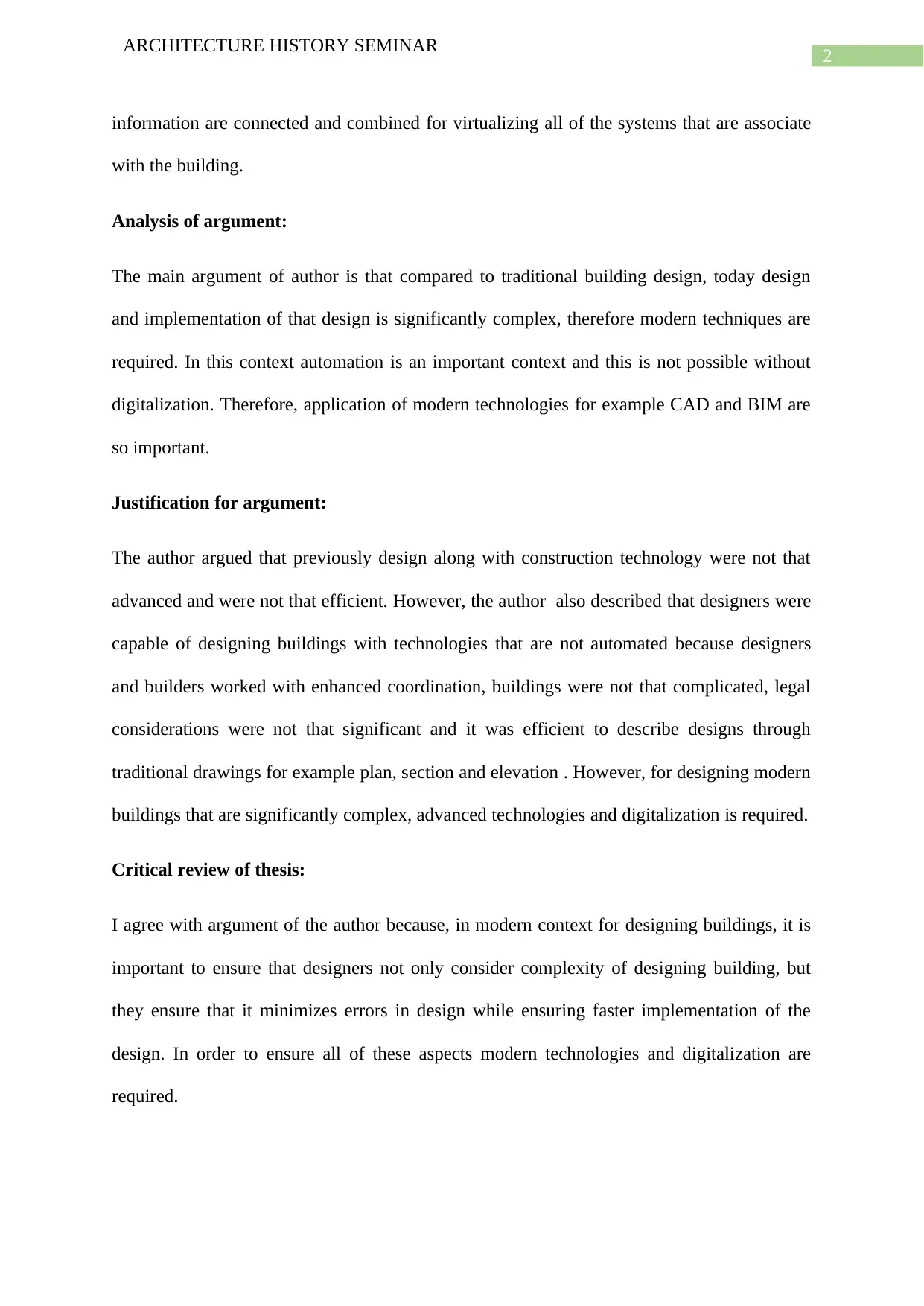Architecture History Seminar Report: Digitalization
VerifiedAdded on 2022/09/06
|3
|608
|16
Report
AI Summary
This report examines the impact of digitalization on architectural design, contrasting traditional methods with modern technologies. It analyzes the evolution from manual drafting to computer-aided design (CAD) and building information modeling (BIM), highlighting how these advancements have simplified and enhanced the design process. The report emphasizes the shift from representing buildings on paper to utilizing parametric models and integrated digital systems. The author argues that digitalization is crucial for handling the complexity of modern building design, minimizing errors, and improving efficiency. The report concludes by agreeing with the author's viewpoint, underscoring the importance of modern technologies and digitalization in contemporary architectural practices, where designers must consider design complexity, minimize errors, and ensure faster project implementation.
1 out of 3









![[object Object]](/_next/static/media/star-bottom.7253800d.svg)